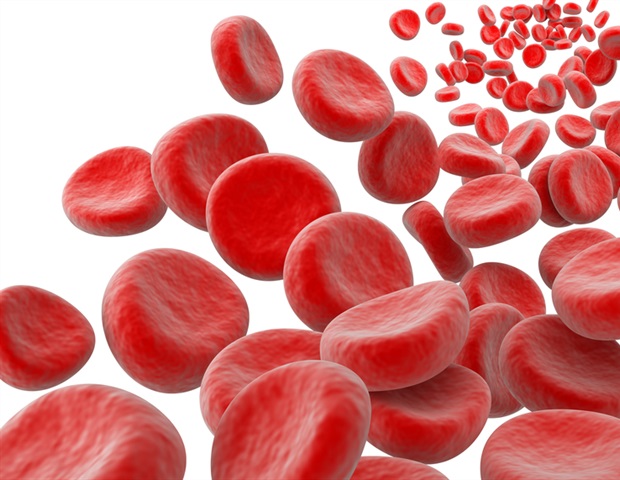Platelets are probably best known for their role in blood clotting, making scabs and related, if less salubrious, contributions to heart attacks and strokes. But these tiny, saucer-shaped blood cells have other physiological duties as well, including surveillance for viral or bacterial infections, the recruitment of immune cells to the site of a suspected incursion and even the direct destruction of pathogens. Now, thanks to the findings of a Ludwig Cancer Research study, we can add to this rich portfolio an additional and critically important function.
Researchers led by Ludwig Oxford’s Bethan Psaila and postdoc Lauren Murphy report in the current issue of Science that platelets may also help suppress systemic inflammation. Better yet, the way they do so can be readily harnessed to significantly improve the early and minimally invasive detection of cancer and the sensitivity of prenatal screening.
While platelets do not have their own nuclei, we discovered that they act like sponges, mopping up the fragments of DNA that are released by dead and dying cells. Our bodies employ multiple mechanisms to clear these bits of DNA from the bloodstream, as they can provoke inflammatory and autoimmune disorders if they accumulate. Our findings suggest platelets play an important role in limiting the abundance of DNA fragments in plasma. Fascinatingly, we also discovered that they then release these pieces of DNA when they are activated, suggesting that platelets can deploy their DNA cargo in a manner that prevents nonspecific inflammation yet elicits targeted inflammatory responses where they’re needed, such as, say, at a site of injury.”
Bethan Psaila, Ludwig Oxford
Cell-free (cf) DNA can also include traces of circulating tumor cell-derived DNA (ctDNA). An increasingly sophisticated suite of technologies now exists to isolate and analyze ctDNA for the noninvasive detection of cancers and monitoring of responses to therapy. But ctDNA levels are very low, especially in the earliest stages of disease, when cancers are best detected. Its rarity reduces the sensitivity of cancer screening by such “liquid biopsies”.
As it happens, the cfDNA collected for these diagnostics is currently isolated from blood plasma after all the blood cells, including platelets, have been discarded. The findings of this study suggest that a substantial proportion of cfDNA, including that derived from tumor cells, is contained within platelets, and this important source of information is therefore being missed.
“We’ve demonstrated that platelets take up DNA fragments that bear the mutational signatures of cancer cells,” said Murphy. “This is true not only in patients with advanced cancer but, remarkably, also in people who have pre-cancerous polyps in their colon, suggesting that platelets may offer an additional and so far untapped reservoir of cfDNA that could significantly improve the sensitivity of liquid biopsies.”
The finding that circulating platelets bear the genetic signatures of cancer has significant implications for cancer prevention.
What prompted the researchers to look for DNA in cells that lack a nucleus?
Platelets have a notable morphological quirk: they’re shot through, like sponges, with a network of membrane-lined channels called the open canalicular system. These channels allow them to release certain biomolecules essential to clotting and tissue repair upon activation and to pick up others, like viral RNA and DNA, as they circulate. Given the latter capability, Psaila hypothesized several years ago at a multi-institutional, cross-disciplinary brainstorming session organized by the philanthropy Cancer Research UK that platelets might also be picking up genomic cfDNA.
In partnership with senior author Chris Gregory at the University of Edinburgh, Psaila prepared a pitch, winning a small award that allowed her to hire a research assistant, Murphy, to validate this hypothesis. A year later, the researchers had exciting data that helped Murphy secure a position in a PhD program and a major early detection project grant from Cancer Research UK.
They and their colleagues, including Ludwig Oxford’s Benjamin Schuster-Böckler, whose lab conducted computational analysis for this study, showed that platelets indeed mop up human cfDNA in lab cultures and clinical samples. To prove that they weren’t just seeing residual DNA from megakaryocytes-nucleated cells from which platelets are derived-the researchers examined DNA from the platelets of pregnant women known to be carrying males. They report that they could predict the sex of the baby in every blood sample they analyzed by detecting fragments of the Y chromosome in the platelets, which could only have come from fetal cfDNA they’d mopped up in their travels.
“Given their abundance, ease of isolation and tissue-wide perfusion, platelets are ideally positioned to serve as biosensors for genetic perturbations across tissues,” said Psaila.
Future work in the lab will seek to clarify the role of platelets in the physiological management of cfDNA and the fate and consequences of DNA fragments released upon platelet activation.
This study was funded by Ludwig Cancer Research, Cancer Research UK, the UK Medical Research Council, Rosetrees Trust, Kidani Memorial Trust and Yosemite.
Bethan Psaila is an associate member of the Oxford Branch of the Ludwig Institute for Cancer Research and an associate professor in hematology at the University of Oxford.
Source:
Journal reference:
Murphy, L., et al. (2025). Platelets sequester extracellular DNA, capturing tumor-derived and free fetal DNA. Science. doi.org/10.1126/science.adp3971





